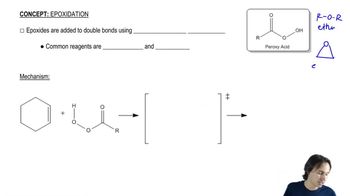Show how you would synthesize the following primary alcohol by adding an appropriate Grignard reagent to formaldehyde.
(b)

 Verified step by step guidance
Verified step by step guidance Verified video answer for a similar problem:
Verified video answer for a similar problem:



 13:4m
13:4mMaster Reactions of Organometallics with a bite sized video explanation from Johnny
Start learning